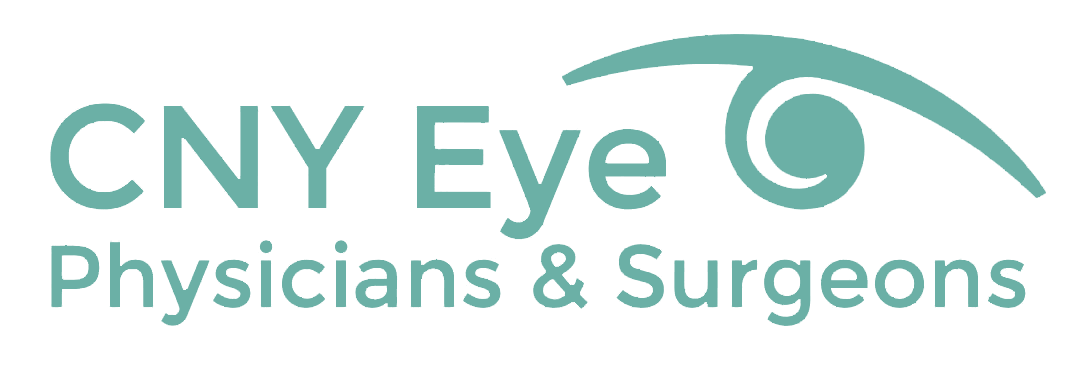Cataract Treatment in Utica, NY
Cataracts are the leading cause of visual impairment in the United States. However, because cataracts grow slowly over a long period of time, many people suffer from this condition without realizing it.
The cataract specialists at CNY Eye Physicians & Surgeons are pleased to offer the people of Utica, New Hartford, Clinton, and the Little Falls, NY areas a variety of vision correction options including laser cataract surgery and the TECNIS® Symfony Intraocular Lens (IOL). If you would like to book an appointment with one of our eye doctors in Utica, call today at 315-735-8358.
Specialized Cataract Surgery
Correcting Astigmatism during Cataract Surgery
Cataracts and astigmatism are common eye problems that affect many of our patients. The cataract surgeons at CNY Eye Physicians and Surgeons have been trained to use a surgical procedure called Limbal Relaxing Incisions (LRI) to treat or “correct” mild astigmatism during cataract surgery. These incisions are created at the edge of the cornea, the clear dome-shaped window on the front of the eye, to improve the way it bends light into the eye.
By combining cataract surgery with an LRI procedure we allow our patients the potential to have their astigmatism diminished at the same time as their cataract removal and lens implantation. Of note, patients with greater levels of astigmatism may require an astigmatism correcting, or Toric lens implant.
What is a Cataract?
A cataract is a clouding of the lens in the eye. This is a natural part of aging and if you are over 55, there is a good chance you may have some form of cataract. When the lens becomes clouded by a cataract, it prevents light and images from reaching and focusing on the retina, the light sensing nerve tissue that lines the back of the eye. Vision with cataracts can be described as seeing life through a cloudy window- objects become blurred, colors become dull and seeing at night becomes more difficult.
Cataracts are the leading cause of visual impairment in the United States. However, because cataracts grow slowly over a long period of time, many people suffer from this condition without realizing it.






Cataract Surgery
Cataract surgery with your ophthalmologist at CNY Eye Physicians & Surgeons involves removing the cataract and replacing it with a lens implant so that the eye can properly focus. That implant is custom selected for you based upon the length and shape of your eye. Laser, ultrasound and sophisticated computer formulas help us to target a specific focus distance for your lens implant.
However, at CNY Eye Physicians & Surgeons, we need your guidance to help us choose the focus distance you will find to be the most comfortable.
An intraocular lens, or IOL, is an artificial lens used to replace your cloudy natural lens. Below are the most common types of IOLs currently available and what each is designed to do for your vision.
Conventional Cataract Surgery vs. Laser Assisted Cataract Surgery
Standard (conventional cataract surgery) is the most common method of cataract surgery. The surgeon makes a small incision in the front of the eye and uses a non-laser instrument (phacoemulsifier) to create sound waves (ultrasound) that break up the cataract into small fragments. This instrument is then used to suction out the cataract fragments. However, another technique uses the femtosecond laser and a computer to perform one or more steps of the cataract operation.
Standard cataract surgery is very successful in restoring vision for many patients. In fact, it is the most frequently performed surgery in the United States; more than 3 million cataract surgeries are done each year. For decades, cataract surgery, including the first incisions and the breakup and removal of the cataract, was performed by hand. Now, additionally, CNY Eye Physicians and Surgeons offers the option of femtosecond laser as an adjunct to cataract surgery.
What is Laser-Assisted Cataract Surgery?
The femtosecond laser automates the following steps:
- Creating the primary incisions and sideport to access the cataract
- Creating the circular incision around the capsule of the lens in the eye, a procedure called a capsulotomy
- Fragmenting the cloudy portions of the lens to facilitate its removal
- When appropriate, creating the incisions to reduce astigmatism
The surgeon is able to customize each patient’s surgery individually with the femtosecond laser system.
What are the benefits of Laser-Assisted Cataract Surgery?
The femtosecond laser can be used for corneal incisions, lens softening during cataract surgery, and incisions to correct astigmatism potentially enhancing the precision of these steps compared with a manual approach. It may reduce the time that the surgical incision is open and may ease the stress on the eye by reducing the total amount of energy used to remove the cataract.
How does it work?
The femtosecond laser emits optical pulses in the realm of a femtosecond—an almost unimaginably short duration (one-millionth of one-billionth of a second). A femtosecond laser can be thought of as a ‘microscalpel,’ cutting and breaking up the cataract on a microscopic scale with an incredible level of precision.
What is Ora?
The Optiwave Refractive Analysis System (ORA)The Optiwave Refractive Analysis System (ORA), may further increase the level of precision in procedures. The Optiwave measures the eye’s power after the cataract is removed, which can assist the surgeon in choosing the most effective lens implant.

Monofocal Lenses
- Have a single focal point for clear vision
- Most patients will still require glasses for some tasks
- “Blended vision” or monovision can be achieved by using a different focal point in each eye
Astigmatism Correcting Lenses (Toric)
Toric lens implants are a sophisticated technology for patients who have astigmatism. Astigmatism is a common focusing problem in which the cornea is shaped more like a football, than perfectly round like a basketball. Most patients with astigmatism depend on glasses or contact lenses to see clearly.
Traditional lens implants can correct for nearsightedness or farsightedness, however, they do not correct for astigmatism. A toric implant may offer a clearer image than a standard monofocal implant in individuals with astigmatism, with the potential to diminish dependence on glasses or contact lenses at a given focus distance.
Toric implants are comprised of the same material and have the same excellent safety record as traditional implants. The surgery is performed generally the same way as any standard lens implant; with the exception that special attention is paid to the orientation of the implant to treat astigmatism.
Multifocal and Accommodating Lenses
Multifocal lenses are designed to provide a broader range of clear vision. These work more like a pair of bifocals or progressive add lenses. Incoming light is split approximately 50% to distance and 50% to near. They may offer a greater degree of independence from glasses for most distance and near tasks. However this comes with a cost: a reduction in image quality. There is a significantly increased risk of glare, halos, and other visual artifacts around lights, particularly at night, or increased light scatter from the sun which can be bothersome to some people.
Accommodating lens implants can allow some individuals to focus at variable distances. The lens implant is designed to shift its position in the eye depending on your focusing effort. The degree to which these works vary considerably from person to person.
Introducing TECNIS® Symfony Intraocular Lens (IOL)
The FDA approval of the TECNIS® Symfony Intraocular Lens (IOL) is great news for people with cataracts hoping for more flexible fTECNIS® Symfony Intraocular Lens (IOL) Uticaocus after cataract surgery. Past generations of lens implants were primarily monofocal, allowing clarity at a single range: far away, close up or in the middle.
The TECNIS® Symfony IOL is the first extended range of vision IOL. It often allows a broader range of focus from distance (i.e. driving) to arm’s length (i.e. computer). If implanted in both eyes the focus range can be customized, making one eye more driving dominant and the other more reading dominant with their focusing ranges overlapping. With this approach in the Concerto study spectacle independence was high and only 14.4% of individuals required reading spectacles frequently.
